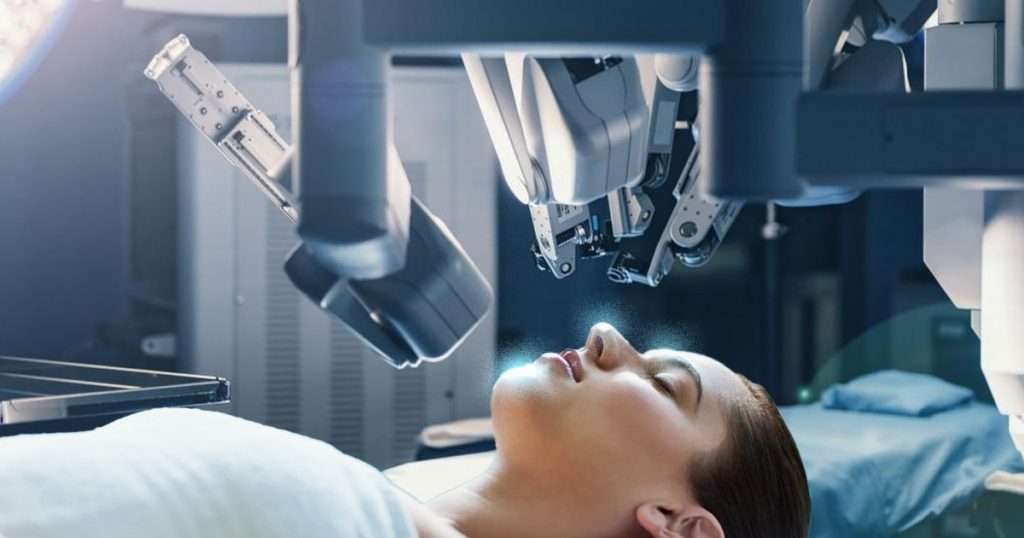Robotic surgery has transformed the landscape of modern medicine, offering advanced technology that combines the precision of robotics with the expertise of skilled surgeons. This blog explores the various aspects of robotic surgery, highlighting its advantages and disadvantages to help you understand if this innovative treatment option is suitable for you.
What is Robotic Surgery?
Robotic surgery, also known as robot-assisted surgery, is a minimally invasive surgical technique where surgeons use robotic systems to perform procedures. These systems consist of robotic arms equipped with surgical instruments, controlled by surgeons from a console. The surgeon operates using hand and foot controls to maneuver the robotic arms with precision. The system provides a magnified, high-definition 3D view of the surgical site, allowing for more accurate movements and enhanced surgical outcomes.
Robotic surgery is utilized across various medical specialties, including urology, gynecology, general surgery, and cardiothoracic surgery. It is particularly beneficial for complex procedures that require delicate maneuvers in tight spaces, such as prostatectomies and hysterectomies.
Is Robotic-Assisted Surgery Better Than Traditional Surgery?
The debate over whether robotic-assisted surgery is superior to traditional surgery hinges on several factors. Proponents argue that robotic systems offer significant advantages, such as smaller incisions, reduced trauma to surrounding tissues, less postoperative pain, and quicker recovery times. These benefits can lead to shorter hospital stays and lower rates of complications, benefiting patients both physically and financially.
However, critics point out that robotic surgery comes with its own set of challenges. The initial cost of acquiring robotic systems is substantial, often exceeding millions of dollars, and ongoing maintenance adds to the financial burden. Moreover, some studies suggest that certain procedures may have longer operating times when performed robotically compared to traditional methods.
Ultimately, the decision between robotic-assisted and traditional surgery depends on the specific medical condition, surgeon expertise, and patient preferences. It is crucial for patients to discuss the risks and benefits with their healthcare providers to make an informed choice.
Is Robotic Surgery Safe?
Safety is crucial in any surgery, and robotic surgery is usually safe when done by skilled surgeons. The robotic system boosts the surgeon’s precision and control, lowering the chance of mistakes and improving results. Research shows that robotic surgery often leads to fewer complications, like infections and blood loss, compared to traditional open surgery.
However, there are safety concerns, such as technical issues and the learning curve for surgeons new to robotic systems. Rare technical failures during surgery can disrupt procedures and need quick action to keep the patient safe. Also, the special training needed to use robotic systems adds complexity to ensuring patient safety and the best outcomes.
Pros of Robotic-Assisted Surgery
Robotic-assisted surgery offers several advantages that have contributed to its growing popularity in the medical field:
- Minimally Invasive: Robotic systems allow for smaller incisions, resulting in less trauma to surrounding tissues, reduced pain, and faster recovery times.
- Precision and Control: Surgeons can perform intricate maneuvers with greater precision, aided by magnified 3D visualization and ergonomic controls.
- Reduced Blood Loss: Studies have shown that patients undergoing robotic surgery experience less blood loss compared to traditional open surgery, which can minimize the need for blood transfusions.
- Shorter Hospital Stays: Quicker recovery times often translate into shorter hospital stays, reducing healthcare costs and improving patient satisfaction.
- Enhanced Visualization: High-definition imaging provides surgeons with a clear, detailed view of the surgical site, allowing for meticulous surgical techniques.
Cons of Robotic-Assisted Surgery
Despite its advantages, robotic-assisted surgery presents several challenges and limitations:
- High Cost: The initial investment and maintenance costs of robotic systems are substantial, making them inaccessible for some hospitals and healthcare facilities.
- Training Requirements: Surgeons require specialized training to operate robotic systems effectively, which can be time-consuming and costly.
- Longer Operating Times: Certain procedures may take longer to perform robotically due to setup time and the precision required for each step of the surgery.
- Potential for Technical Malfunctions: Although rare, technical failures in robotic systems can occur during surgery, requiring prompt troubleshooting to mitigate risks.
- Limited Availability: Not all hospitals and medical centers have access to robotic systems, limiting patient access to this advanced surgical option.
Should You Get Robotic-Assisted Surgery in the Future?
Deciding to undergo robotic-assisted surgery should be a joint effort between patients and their healthcare providers. While robotic surgery has many benefits, it’s important to balance these against potential downsides and consider each patient’s specific medical needs and preferences.
Patients seeking robotic-assisted surgery should:
- Consult with Specialists: Discuss the suitability of robotic surgery for their specific condition with experienced surgeons and healthcare providers.
- Evaluate Costs and Benefits: Consider the financial implications, including insurance coverage and out-of-pocket expenses associated with robotic surgery.
- Understand Risks: Educate themselves about potential risks and complications associated with robotic-assisted procedures, including technical malfunctions and longer operating times.
- Explore Alternative Options: Inquire about traditional surgical approaches and alternative treatment options to make a well-informed decision.
Weighing the Pros and Cons of Robotic Surgery for Your Health
Robotic surgery represents a significant advancement in medical technology, offering enhanced precision, minimal invasiveness, and faster recovery times for patients. While it comes with financial considerations and technical challenges, its benefits are undeniable for many surgical procedures.
As technology continues to evolve, the accessibility and effectiveness of robotic surgery are expected to improve, potentially expanding its availability to more patients worldwide. By understanding the pros and cons of robotic surgery and collaborating with healthcare professionals, patients can make informed decisions that prioritize their health and well-being.

